Despite what the 2022 Disney Film Turning Red might have you believe, red pandas are small creatures. They’re less than 20 pounds and anything but the frightening and destructive creature depicted in the movie. Found roaming the Eastern Himalayas, the species’ small population makes them difficult to spot in the wild. Thankfully, we’ve compiled some images and fascinating facts about these gentle creatures in their most tender, pint-sized form.

Baby red pandas are a playful bunch.
©slowmotiongli/Shutterstock.com
1. Red Pandas Have False Thumbs
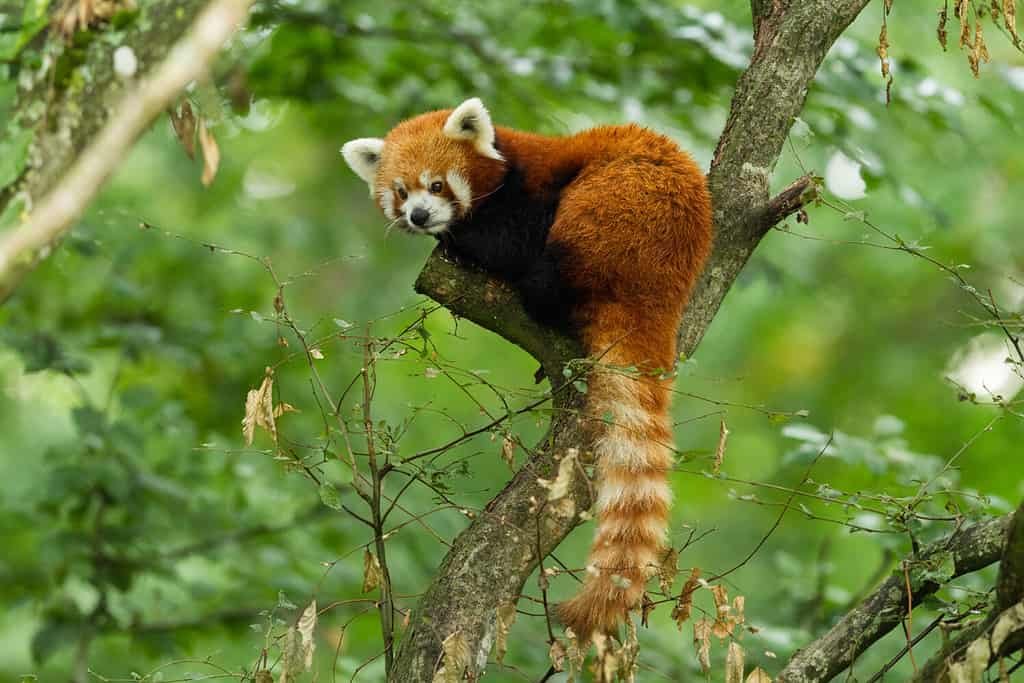
©AB Photographie/Shutterstock.com
That’s right, Red Pandas have a thumb. The wrist bone appendage helps the creature grasp branches and gnaw at bamboo (one of their favorite foods). While it is believed that this thumb developed as an evolutionary tactic, the specific reason is largely unknown. Was it for eating? Thin branch climbing? To give one another a thumbs up? Regardless, the helpful false thumb doesn’t look like it’s going anywhere soon.
2. Red Pandas Can Climb Headlong
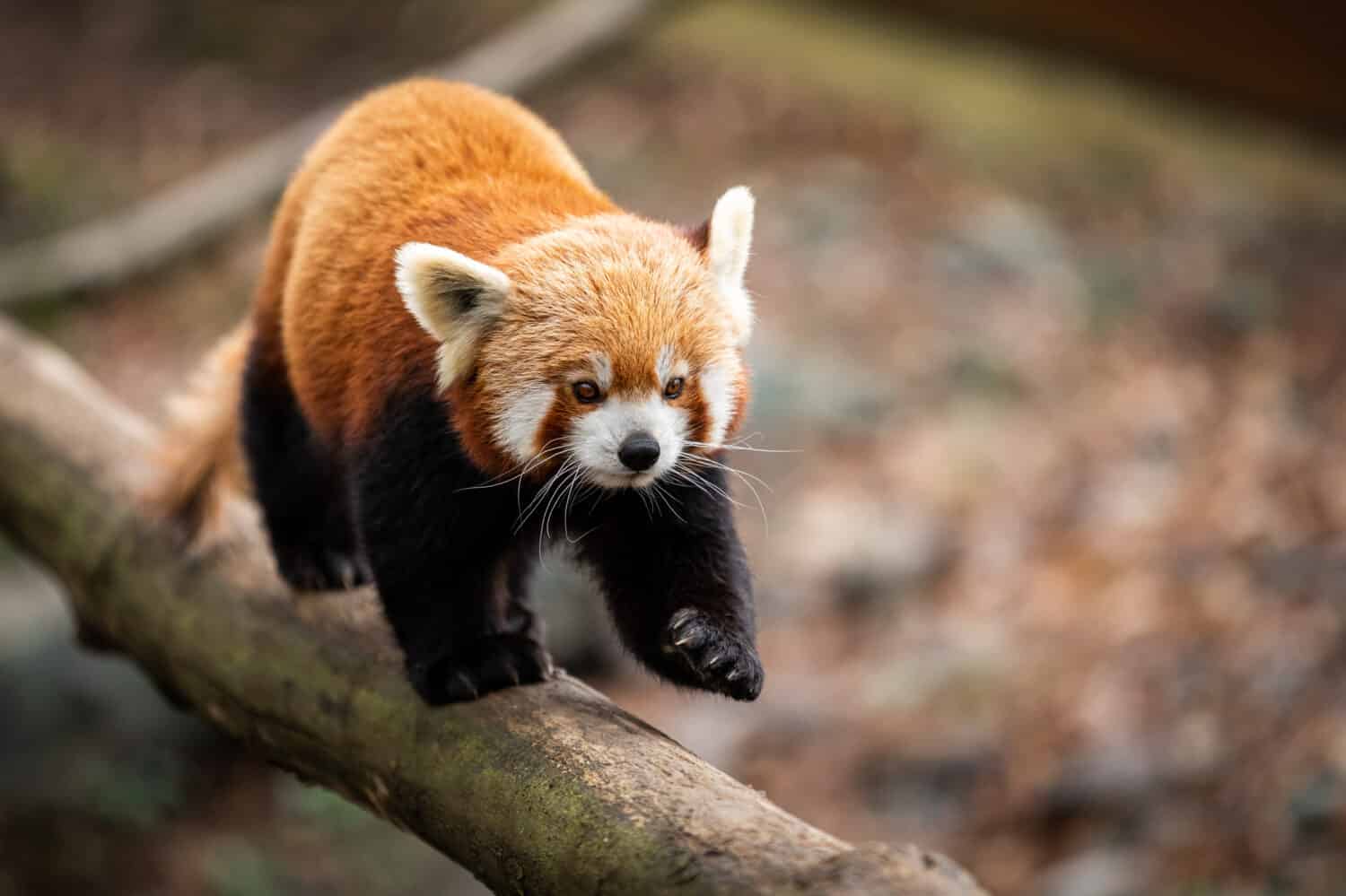
Red
Panda
walking on a tree branch
©AB Photographie/Shutterstock.com
As in, climb a tree head-first. Red Pandas and sloths are some of the few mammals that can climb headlong. While most animals crawl down trees with their hindlimbs, Red Pandas have flexible ankles, sharp claws, and bushy tails that help them cling to and balance on tree branches.
3. There Are Two Red Panda Species
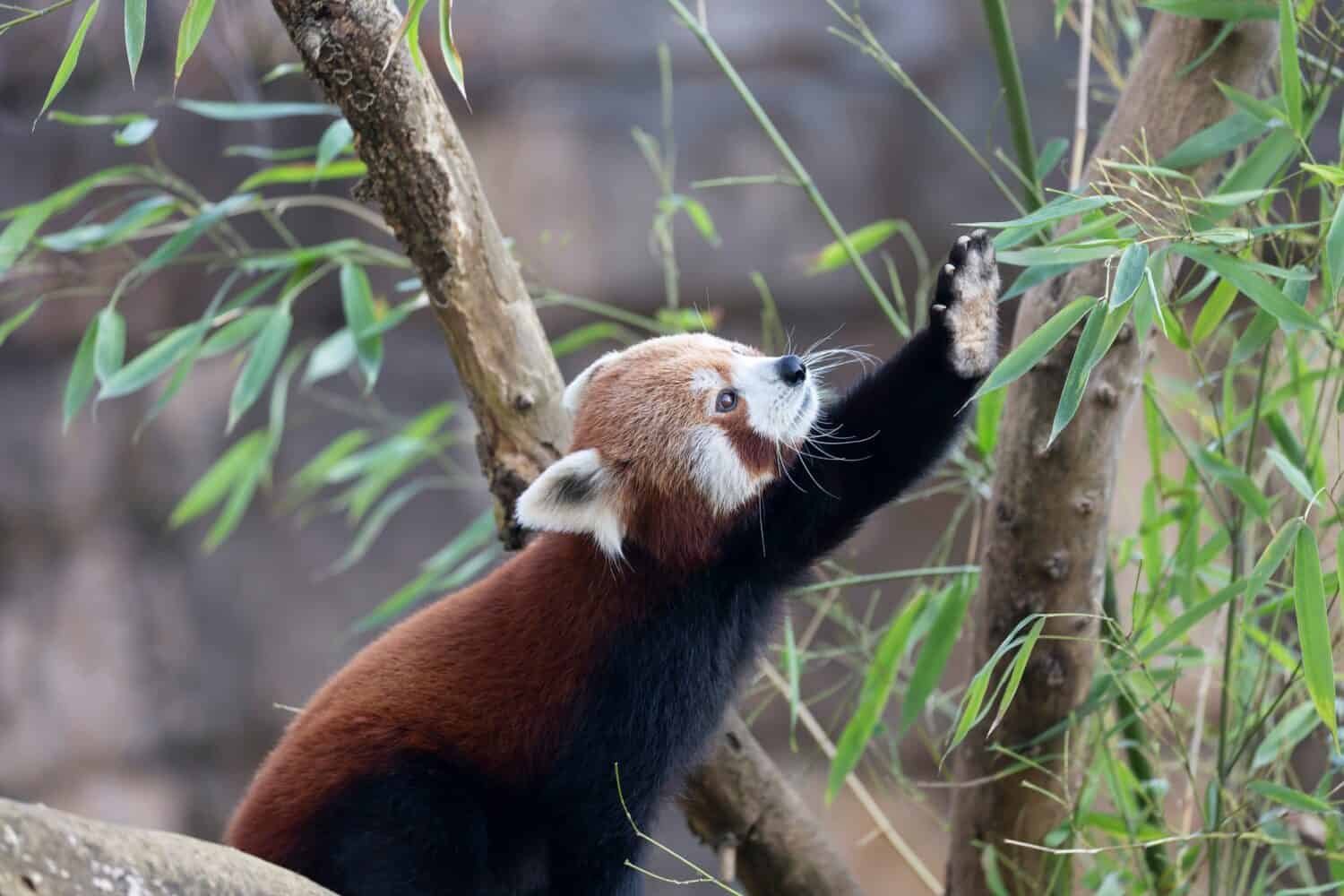
Cute
Himalayan
Red Panda stretches in the trees.
©DKeith/Shutterstock.com
There are two species of Red Panda: the Chinese Red Panda and the Himalayan Red Panda. The two species are named for the places they call home and are remarkably similar. However, Chinese Red Pandas have a distinctly redder face coat. Additionally, their bodies have less white fur, their tails have more distinct rings, and they have more genetic diversity than the Himalayan Red Panda.
Can’t tell them apart? You’re not alone. Until just a few years ago, it was primarily disputed that there was even a separate subspecies of Red Panda—much less two distinct species.
4. Red Pandas Are Omnivores, But Their Digestive System Doesn’t Know That

It’s hard to deny the adorable nature of baby red pandas, but they are still wild animals.
©Abeselom Zerit/Shutterstock.com
Bamboo shoots and leaf tips comprise 90% of a red panda’s diet. Interestingly, though, their digestive system struggles to process the cellulose components of the plant. Because of this, the red panda needs to consume a large amount of bamboo to feel even remotely full.
The red panda’s digestive system is better suited for an entirely carnivorous diet as their bodies can process fats and protein better than carbohydrates. This means the birds, grubs, insects, and small mammals they consume feel better to digest than the pounds of bamboo.
5. There Are Less Than 3,000 Left in the Wild
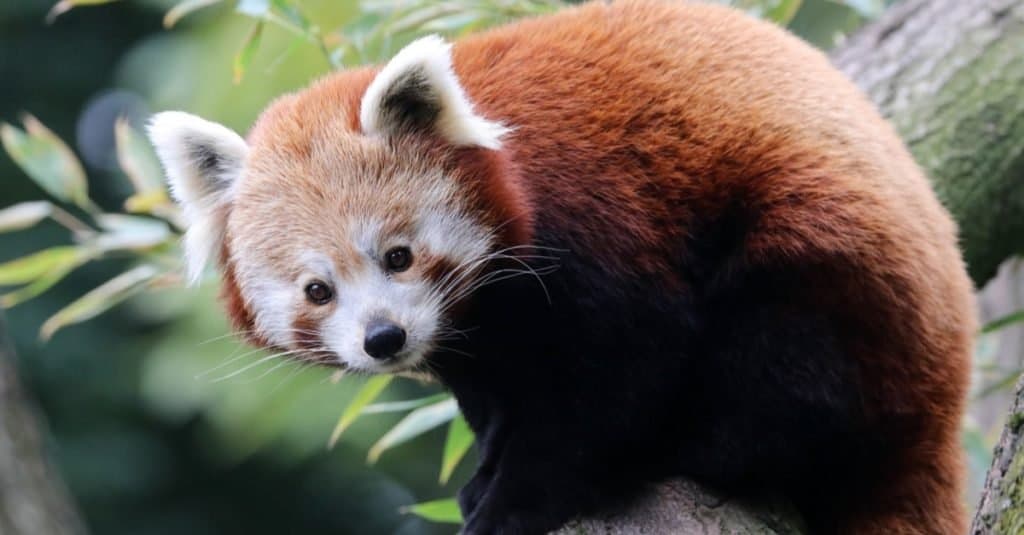
Conservation efforts are underway to protect the red panda.
©iStock.com/Edwin_Butter
These small balls of fluff are endangered and need human protection. Red pandas are listed on the endangered species Red List, meaning if the quick decline of the species doesn’t end soon, we may lose them forever.
The overall population of Red Pandas has declined by an estimated 50% in the last 18 years due to habitat loss and degradation in their native countries. Changing local laws and supporting legislation that will protect the Red Panda habitat and stop the trafficking of the species can make a huge difference.
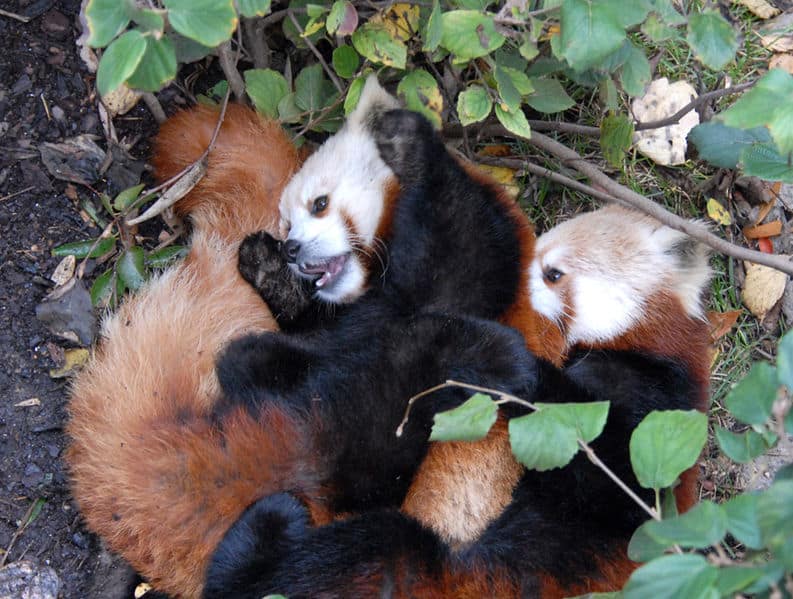
Red panda cubs spend most of their time wrestling and chewing on bamboo.
As we draw the curtain on our baby panda extravaganza, it’s clear that these little wonders of the wild are a source of endless joy and amazement. We’ve explored their enchanting world, from their first wobbly steps to their remarkable bamboo-chomping feats. Our journey through stunning pictures and astounding facts has shown us that these baby pandas are more than photogenic fluffballs – they are resilient, charming, and essential to our global ecosystem.
Next time you find yourself captivated by the sheer cuteness of a baby red panda, remember that these pint-sized cuties play a vital role in preserving the delicate balance of nature. Whether you’re inspired by their adorable antics or impressed by their incredible adaptations, these little red dynamos remind us of the extraordinary beauty of the natural world.
Ultimately, it’s our responsibility to protect and conserve their habitats, ensuring future generations can continue to enjoy and protect red pandas. Let’s cherish and celebrate these remarkable creatures and strive to keep their panda-monium alive in the wild for years.
The photo featured at the top of this post is © schani / CC BY-SA 2.0 – License / Original
Thank you for reading! Have some feedback for us? Contact the AZ Animals editorial team.






